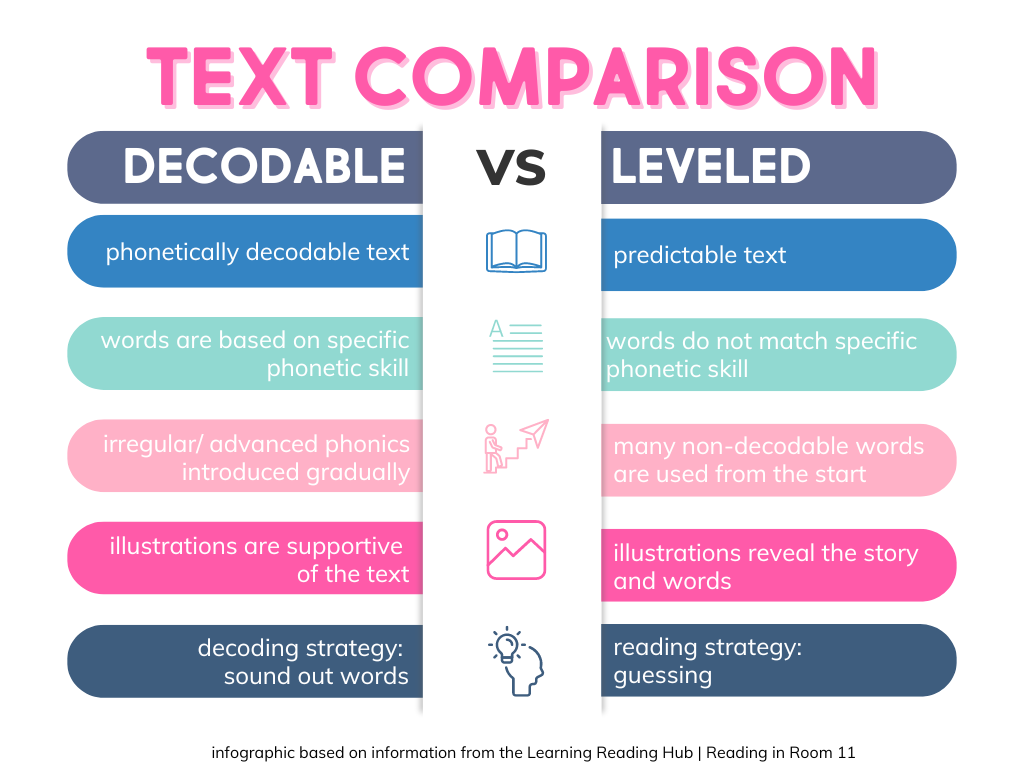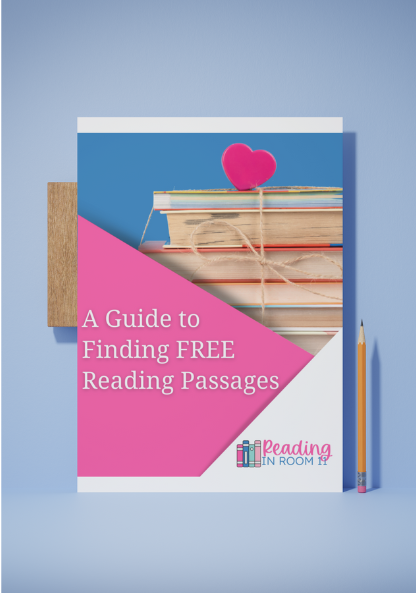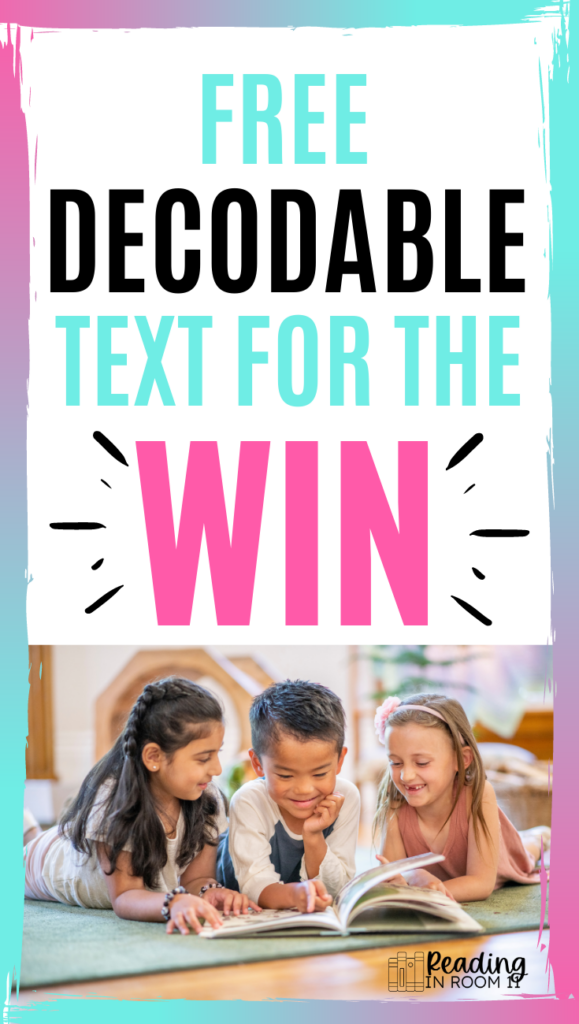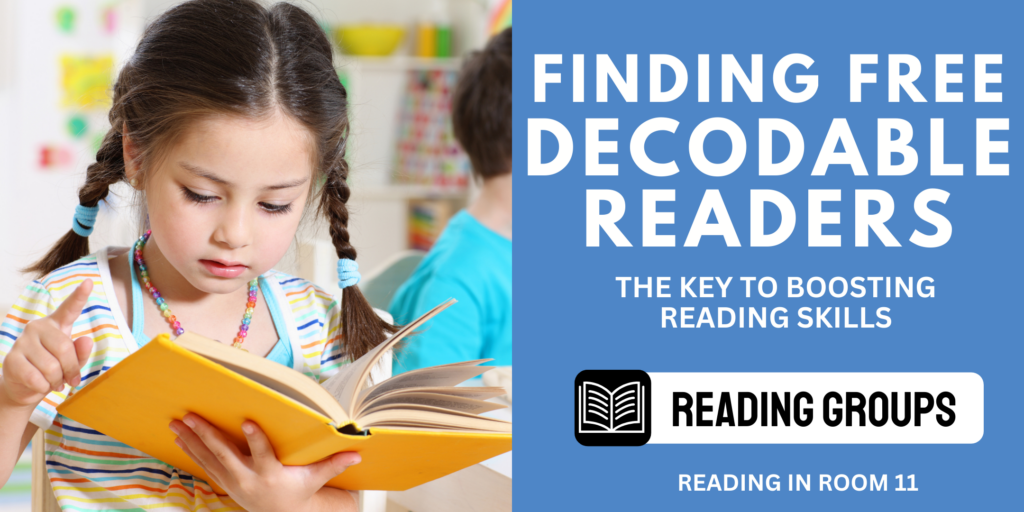Do you want your students to learn to read quickly and easily? Do you want them to build confidence in their reading ability? If so, then you need to be using high-quality decodable texts for your students. Decodable texts are an essential tool in reading instruction and I want to show you how to find them for free!
WHAT IS DECODABLE TEXT
Decodable text is a type of text that is written using only sounds that students have been taught explicitly. This means that students can focus on decoding the words, rather than guessing what they mean. Decodable text can be a valuable tool for helping students learn to read,.
WHY IS DECODABLE TEXT IMPORTANT?
- No guessing! Decodable text prevents students from relying on guessing words based on context alone. This helps them apply the specific phonetic skills they’ve learned.
- Transfer of skills: By using decodable text, students can transfer the skills they’ve practiced in isolation into real text. This helps them bridge the gap between phonics instruction and reading fluency by helping them apply the decoding skills they learn in phonics lessons to real text.
- Sharpen word attack/decoding strategies: Decodable text allows students to practice their word attack and decoding strategies in a controlled setting. It strengthens their ability to break down unfamiliar words.
- Increased accuracy: Students who read text that aligns with their current phonetic knowledge experience higher accuracy rates. This boosts their confidence and overall reading progress.
- Improved fluency: By working with decodable text, students can develop fluency by applying their phonics skills to read smoothly and with expression.
- Builds confidence: Success breeds confidence. Decodable text allows students to experience success in reading, which boosts their confidence and motivates them to continue learning.

HOW IS DECODABLE TEXT DIFFERENT FROM LEVELED TEXT
Decodable text is the best choice when teaching students to read. Decodable text supports early reading skills, featuring phonetically regular words that align with specific phonetic skills.
As students progress, decodable text gradually introduces irregular or advanced phonics, expanding their reading abilities in a structured manner. At the same time, the decoding strategy of sounding out words provides a solid foundation for young learners.
Unlike decodable text, leveled text does not prioritize aligning words with specific phonetic skills. This can make it difficult for students to learn the decoding skills they need to read independently. Additionally, leveled text often includes non-decodable words, which can hinder students’ phonetic development.
Leveled texts incorporate non-decodable or irregular words that are a road block students’ phonetic development. Although the illustrations in leveled text reveal the story, they don’t contribute to a strong connection with the words on the page.
Unfortunately, guessing is the primary reading strategy encouraged in the leveled text, while applying decoding skills is the focus of decodable text.
When facilitating effective reading instruction, the decodable text proves to be the clear winner. Its emphasis on phonetic skills, gradual introduction of advanced phonics, supportive illustrations, and sound-based decoding strategy contribute to a more explicit and systematic learning experience.

WHERE CAN I FIND FREE RESOURCES WITH DECODABLE TEXT?
Core Knowledge Language Arts (CKLA) is the perfect choice if you’re looking for free resources. CKLA offers a systematic scope and sequence, along with explicit skills instruction.
“A Guide to Free Decodable Text” provides a detailed overview of the skills covered in grades kindergarten through second, with links to free decodable texts that align with each skill. You can access a teacher guide and a student workbook, all available for free download!
While CKLA has the most comprehensive selection of decodable readers, I have also linked West Virginia Phonics and Fly Leaf Publications resources.

HOW CAN I USE THESE RESOURCES?
Using these free decodable readers is a fantastic way to reinforce specific skills with your students. The decodable texts provided by CKLA are tailored to complement the skills they’re working on.
If you are looking for appropriate word work based on these texts, I can save you hours of planning time by providing print-and-go lesson packets using these decodable texts. These comprehensive lesson plans are tailored to the CKLA skills you’re focusing on.
These lesson plans are also designed to cover the six essential routines of a reading group, all rooted in the science of reading (sound review, word chaining, reading decodable words in isolation, reading decodable words in a text, and dictation).

FINAL THOUGHTS
To be very honest, I was trained in LLI (Leveled Literacy Instruction) by Fountis and Pinnell and used it for many years. This program has leveled readers and the phonics instruction is not related to the text in any way. But when you know better – you do better. When my district moved away from this and towards evidence-based instruction rooted in the Science of Reading, decodable readers became the clear winner.
Grab your free decodable text resources and provide your students with a solid foundation for phonetic development, increase reading accuracy and fluency, and boost students’ confidence. With free resources like those offered by CKLA, you can easily bring these benefits to your classroom.
Other Ideas?
Do you have any other place to find high-quality decodable texts? Let me know in the comments so I can add it to the list!
PIN FOR LATER

